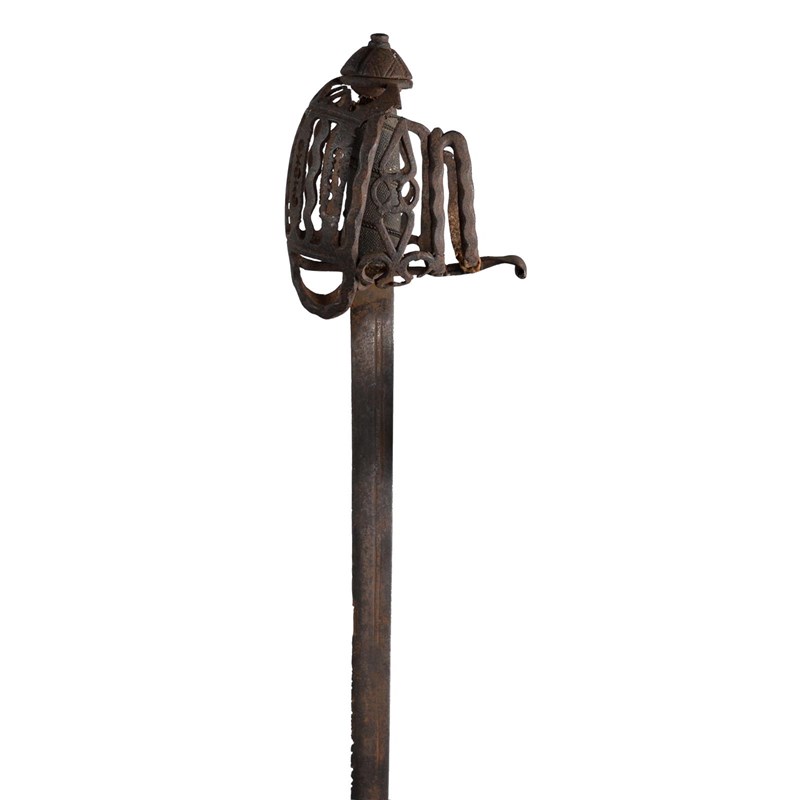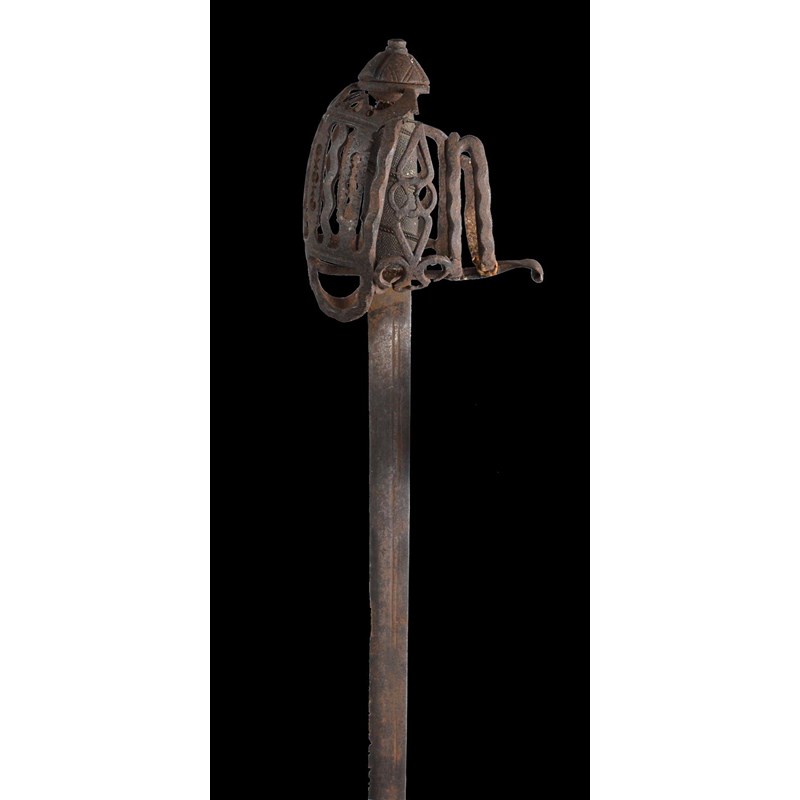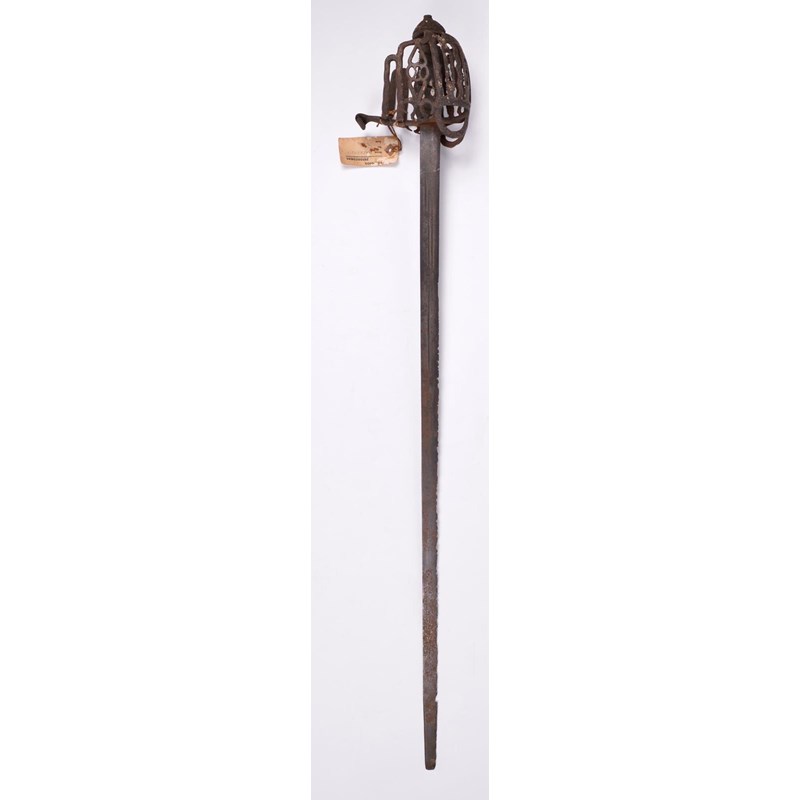Medals & Coins, Arms & Militaria - 03 May 2018
A good 18th Century Scottish basket hilted sword
A good 18th Century Scottish basket hilted sword, having putative Jacobite provenance: single edged blade 34.25 in. and approximately 1.1 in. at the shoulder, off-set narrow fullers extending for about half its length; the iron basket formed of bars with scalloped edges, hearts and scrolls to either side, the front with a four narrow pierced panels alternating with serpentine bars in a vertical arrangement, further hearts towards the pommel, two further bars to each side uniting above the wrist with a flared and scrolling arm guard, two fore guards; conical pommel cut with four vertical grooves, the intervening spaces intersected by further angled grooves with ridges to the centres; original wire bound shagreen grip.
Accompanied by a letter subscribed K.F. Mackenzie (Colonel Kenneth Francis Mackenzie (c. 1800-1856), 64th Bengal Infantry: "Received from Uncle Hugh Mackenzie at Stirling Augst 1829 - a Highland Sword which belonged to Stewart of Ardashield [sic] ........preserved and received from Miss Lilly Wilson of Murray's Hall Stirlingshire...who was a near relation of Stewart......and a staunch Jacobite to the last. The sword is deposited at Kincraig Ross-shire"
The attribution in this letter appears to be to Charles Stewart, 5th Clan Chief of the Stewarts of Ardsheal, who led the Appin Stewarts during the Jacobite Rising of 1745, fighting at the battles of Prestonpans, Falkirk Muir, and Culloden. In apparent contradiction of this the 'Dewar Manuscripts' records Charles Stewart as having a personal sword, named 'The Turk' which he retained for at least the initial phase of his exile (post Culloden) in Flanders. The same document, however, also recounts the distribution of a great many of his valued possessions among humble adherants in the immediate aftermath of the Jacobite defeat, as being preferable to seeing them in the hands of the Hanoverians, which is consistent with the notion of 'Lilly Wilson'. It must also be remembered that this account is a transcript of oral history made a century after the events, and may not be totally dependable where small details are concerned. Certainly the sword appears to have been preserved in prominent Scottish families who believed that it had a connection to Stewart of Ardshiel, and it seems more than credible that, being of the correct type and period, it is a Jacobite sword, if not Charles Stewart's own (principal or secondary) weapon.
Provenance: from the Mackenzie Family to Sir William Martineau of Kincraig, thence by descent.






 Live online bidding is available via our own
Live online bidding is available via our own